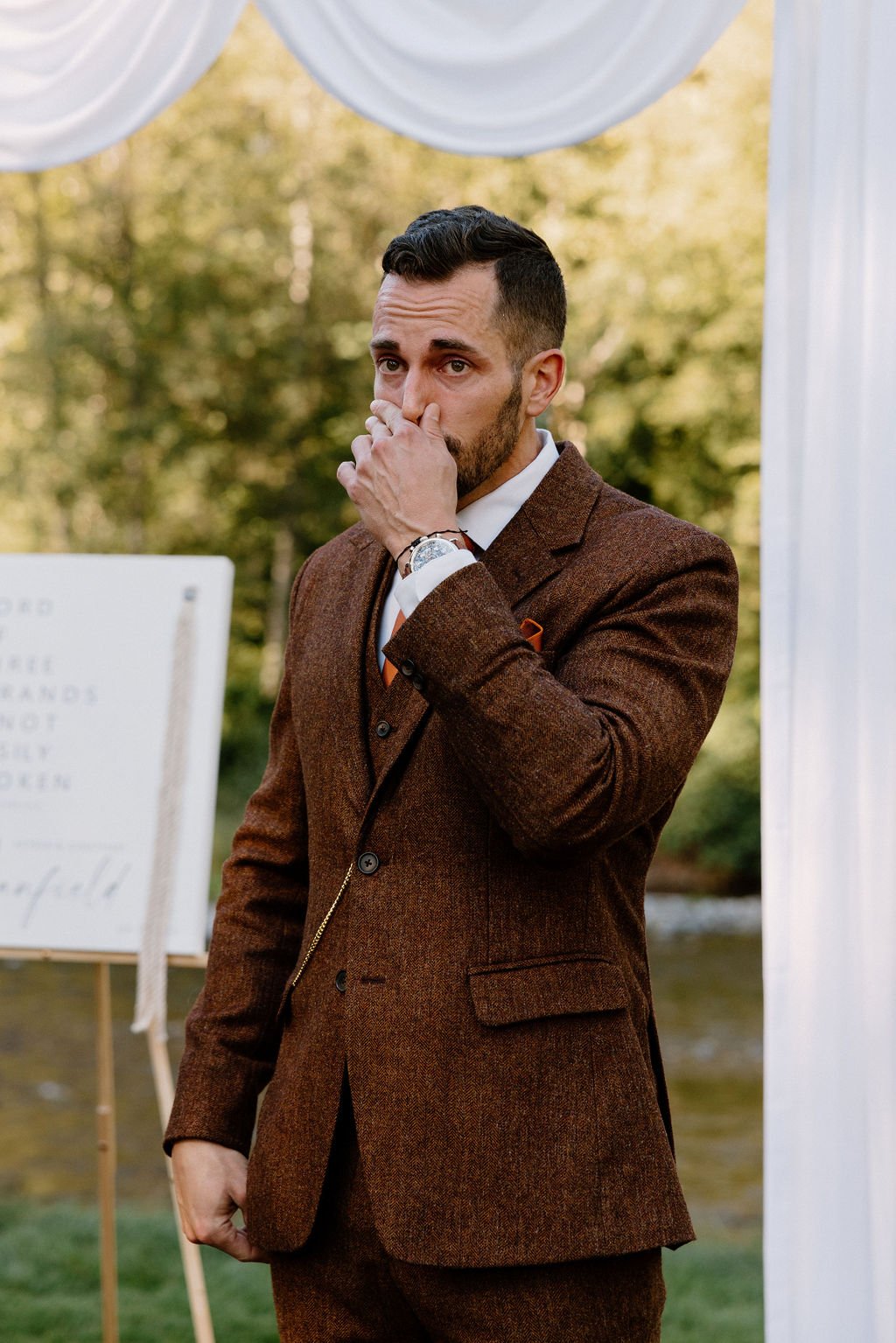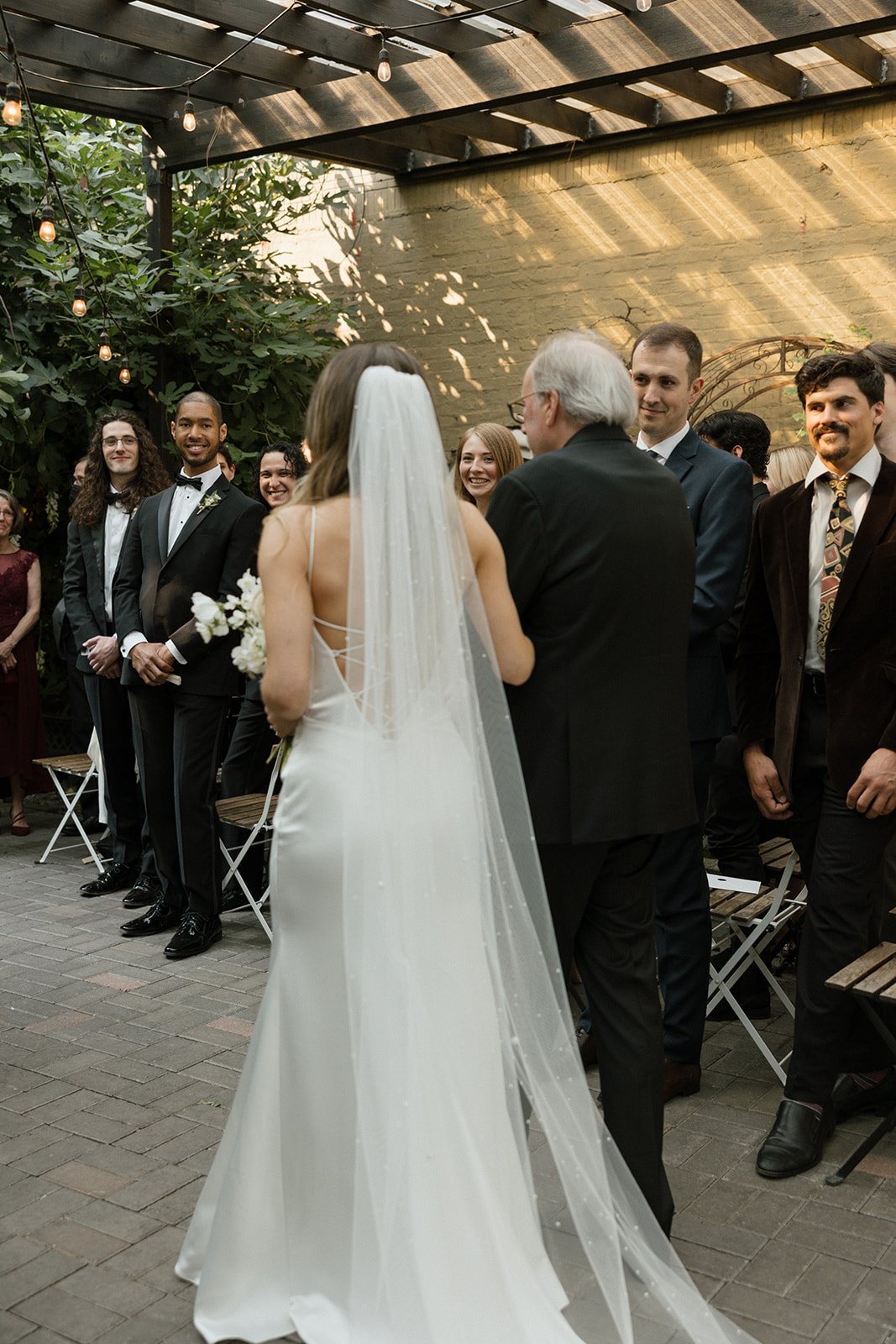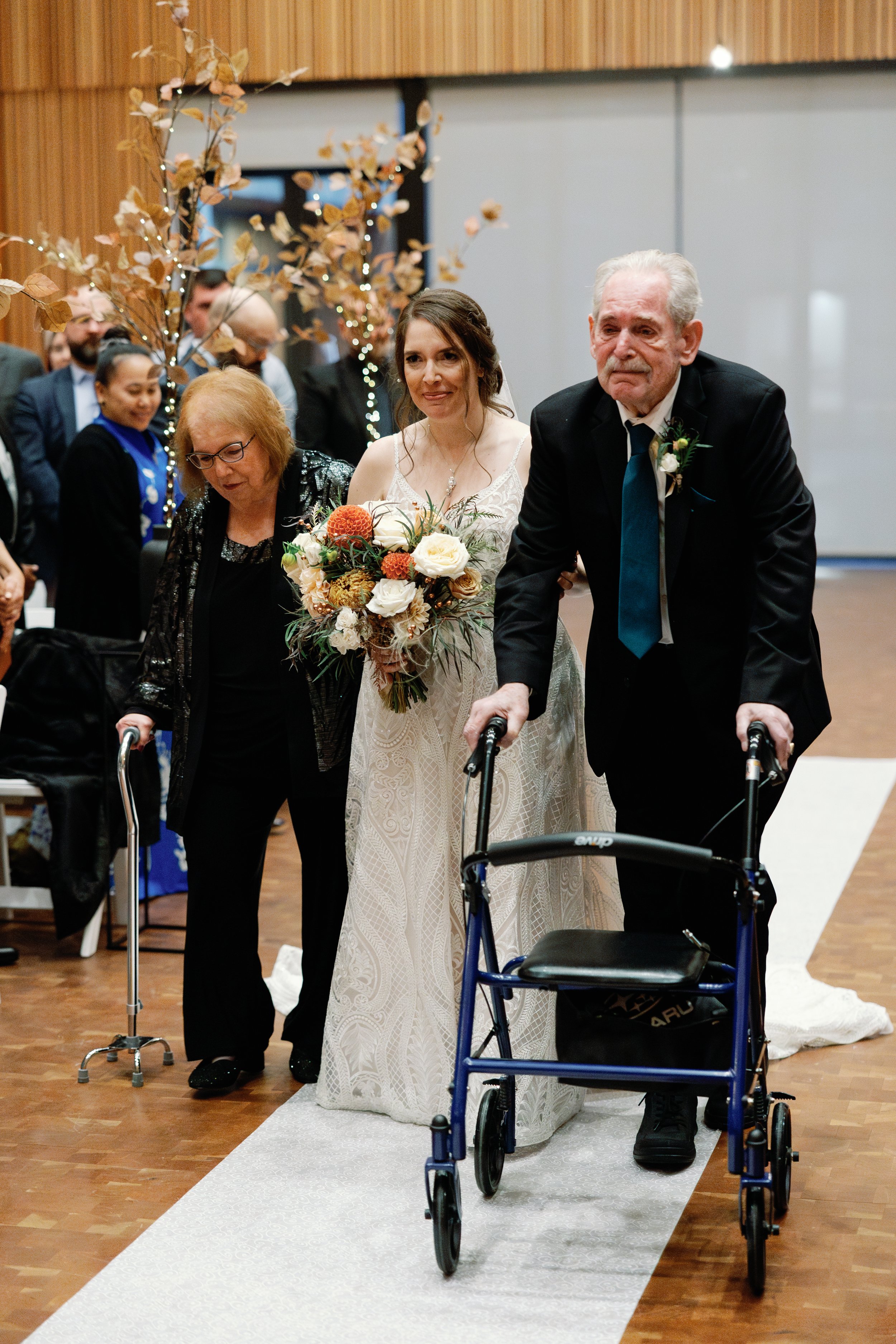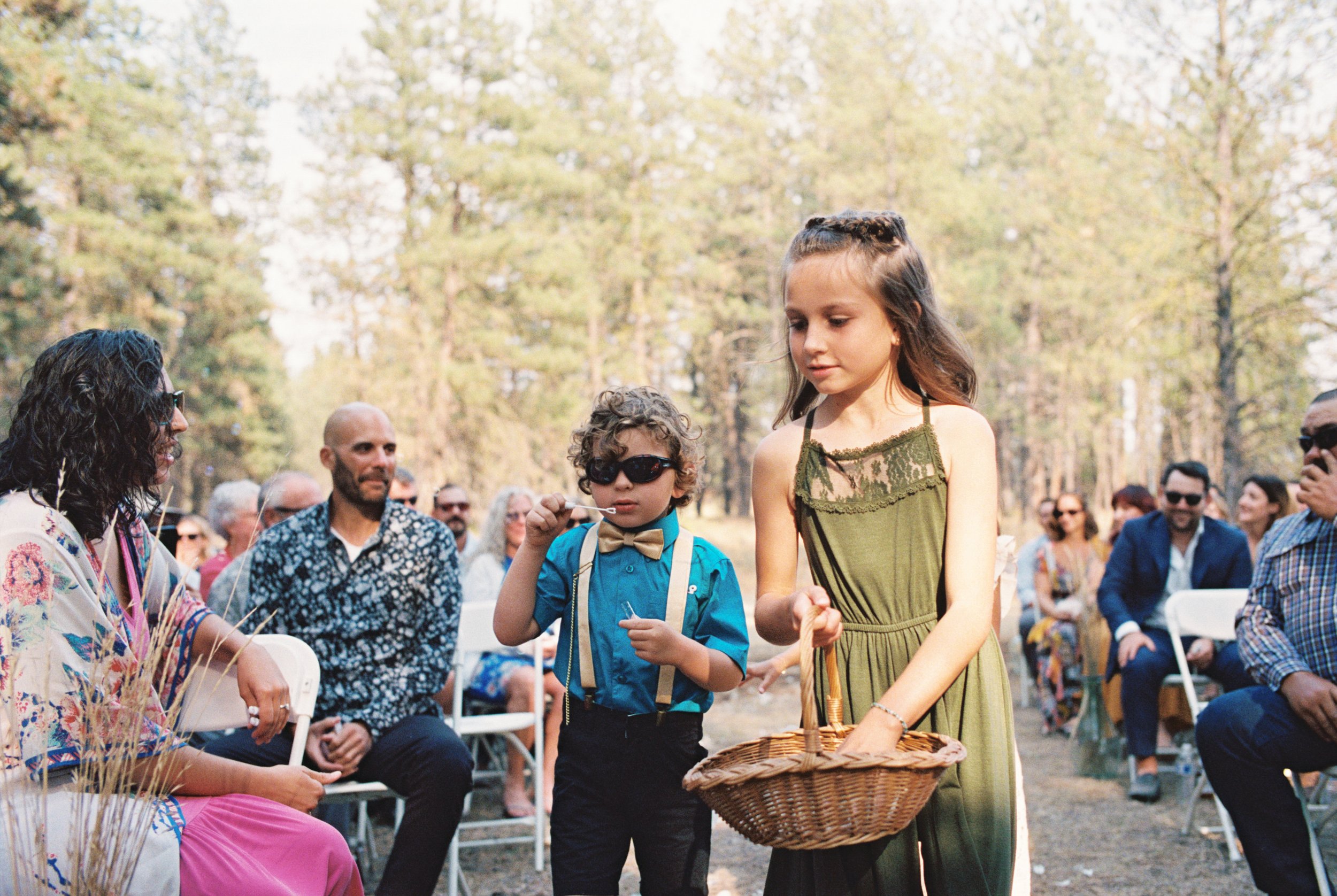Everything You Need to Know About the Wedding Processional Order
Photo by Malorie Kerouac
Weddings are historically a formal event with tradition and culture dictating how things should go. One of the (many) reasons I fell in love with wedding planning is because of how much the wedding industry has evolved in recent years. It’s more common for couples to do away with traditions and plan a wedding that makes them most comfortable. And, I must say, the outcome of planning a wedding that is entirely you is truly magical.
You do not have to follow traditions when planning your wedding, specifically with the processional order. When it comes to a “traditional” processional order - different cultures and religions have variations, and there is no right or wrong here!
So, what’s an example? This would be considered a traditional order of walking down the aisle: start with the officiant and groom, followed by family members - grandparents, parents of the groom, and mother of the bride. Next is the wedding party, ring bearer, and flower girl. Lastly, the bride enters, escorted by the father of the bride.
Right away you might be thinking “Well, this won’t work for me.” This traditional order assumes all parents are in the picture and grandparents are healthy enough to walk down the aisle. Notably, it assumes all aforementioned pairings are male-female couples which may not be the case for your family and wedding party.
When planning weddings, I encourage creating the processional order that is perfect to the couple, using a traditional order as merely a baseline to work off of. These are the questions and tips I share with couples when we’re designing their processional order. I will be using both “Groom / Bride” terminology as well as “Partner A / Partner B” for gender-neutrality. Partner A will simply refer to the first of you to enter, and Partner B will refer to the second.
OFFICIANT: In my experience, it’s just as common to have the officiant already positioned at the altar as it is to have them walk down the aisle.
If you have your officiant walk, do you want them entering before everyone else or right before the Groom / Partner A?
Often the Officiant will enter around the same time as the Groom / Partner A to make sure they aren’t standing by themselves at the altar for too long.
GRANDPARENTS: The traditional order assumes that all grandparents are still alive and able to walk down the aisle. This might not always be the case, so you may need to adjust.
Are your grandparents healthy enough to walk down the aisle?
Would you rather they can be seated before the ceremony if they can’t walk down the aisle?
If one has passed, do you want them to walk by themselves or with someone else? Grandchild, uncle, aunt?
PARENTS OF THE COUPLE: I’ve noticed (you probably have too!) that it’s increasingly common to have both parents walking the couple down the aisle. Any parents not walking either of you in will typically enter right before the Groom / Partner A.
Would you rather have both parents walk you down the aisle or just one?
If you decide to have one parent walk you down the aisle – do you want the other parent to walk in on their own or with another family member?
If the aisle is narrow, you may not have the option of both parents walking you down the aisle. Work with your venue and wedding planner for your options.
GROOM / PARTNER A: You’re typically at the altar before any of the wedding party enters, preparing for my favorite wedding moment – watching their partner walking down that aisle (cue the waterworks)!
Do you want to walk down the aisle or enter from the side?
If you walk down the aisle, do you want one or both parents to walk with you?
WEDDING PARTY: You might have an uneven number of bridesmaids to groomsmen, or have mixed roles, or no wedding party at all. You do you!
If you have a wedding party, do you want them to enter in pairs? Alternatives are having everyone walk down individually, or having groomsmen enter from the side while bridesmaids walk down the aisle by themselves.
Consider the layout of the space - pairs can be helpful for navigating any tripping hazards (i.e. stairs) particularly if bridesmaids are wearing floor length dresses and/or high heels.
What order do you want your wedding party standing in during the ceremony? The first pair to enter first will be the ones standing furthest from the couple at the altar.
If you have a Maid of Honor and Best Man or equivalent roles, they will enter last so they’ll be closest to the couple.
RING BEARER AND FLOWER GIRL: I have seen kids that love getting dressed up and walking down the aisle and I have also seen some that have epic meltdowns. No matter what, it’s always a lighthearted moment.
Would you rather they walk down the aisle together or separately? Depending on the age and temperament of the kids, walking together might help make sure they will make it down the aisle.
Will they be able to make it down the aisle on their own? Consider having the parents visible near the altar for them to walk towards.
BRIDE / PARTNER B: Traditionally, it’s the father of the Bride / Partner B walking them down the aisle. But, it can be anyone - it doesn’t even have to be a parent walking you down the aisle! It can be anyone that is special to you: an uncle, aunt, grandparent, family friend, sibling.
Do you want to walk down the aisle by yourself, with just one parent or both parents?
Would you rather walk down the aisle with a different family member? Brother, uncle, aunt, grandparent?
Once you’ve decided on your processional order, work with your wedding planner and/or day of coordinator to ensure you get your preferred order communicated to everyone and practice (multiple times!) at the rehearsal. Most importantly…this is YOUR wedding. YOU get to decide who does and doesn’t walk down the aisle!
Photos by (from left to right): Wild Romance Photo, Mikayla Herrick, Cameron Zegers, Malorie Kerouac





